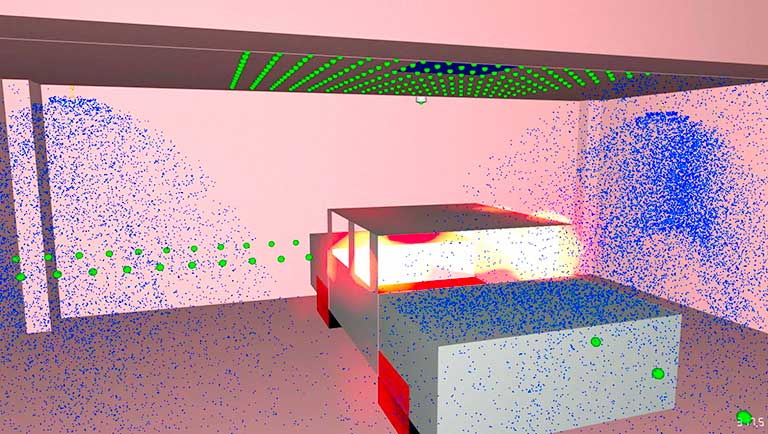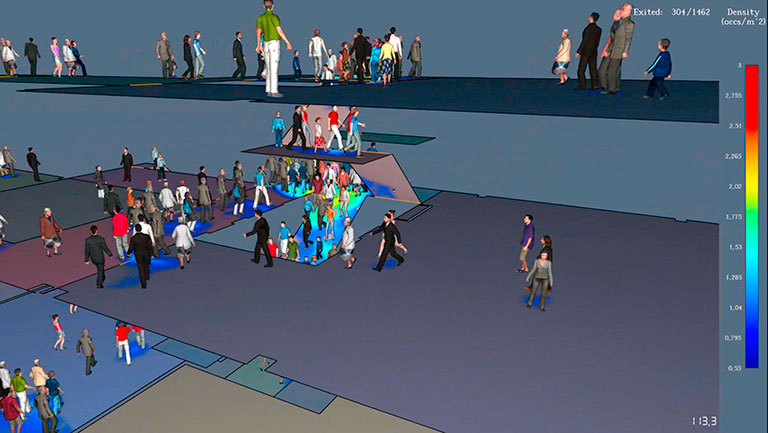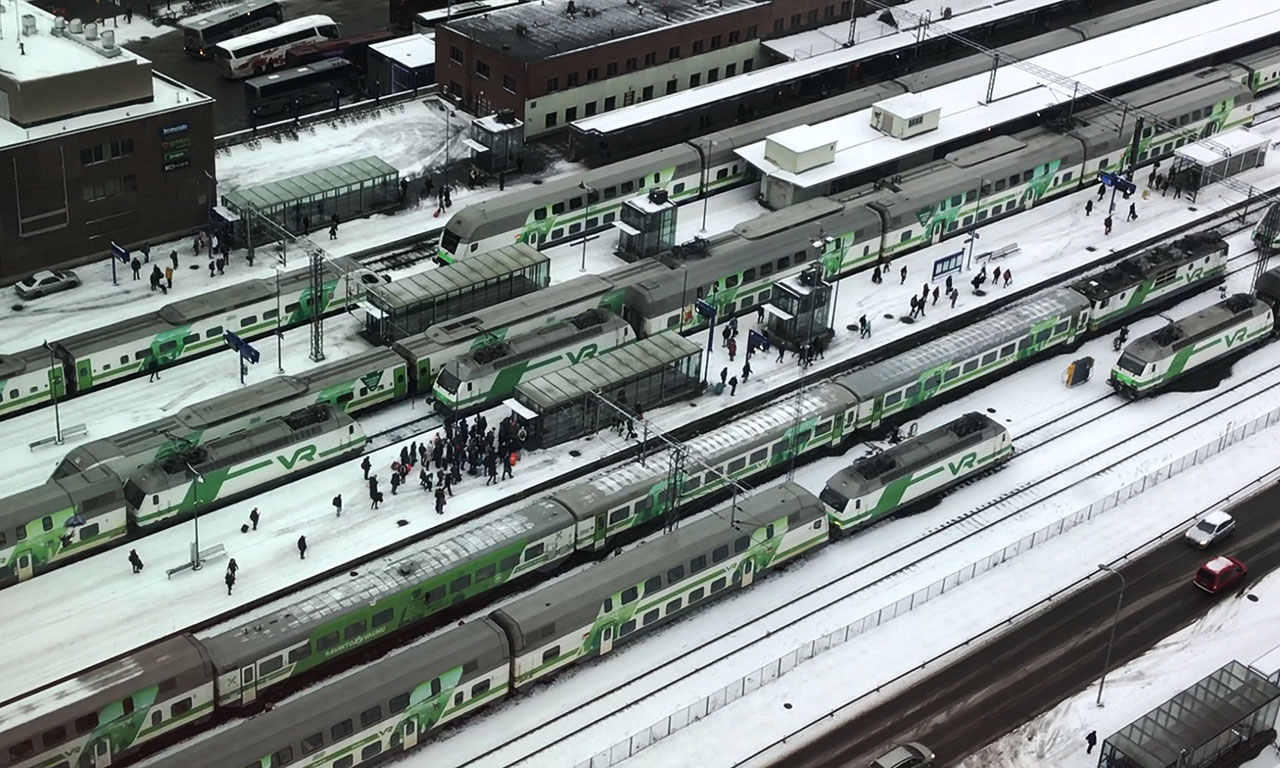Professional simulation is reflected in the outcome of the construction project as cost savings, improvements in fire safety, and a smaller carbon footprint. To ensure reliable results, the fire simulation requires in-depth knowledge, for example, in flow mechanics, thermodynamics and heat transfer. As fire simulation plays a significant role in our most important assignments, we are particularly invested especially in ensuring that KK-Palokonsultti Oy has enough highly trained experts who have the skills required for fire simulation. This allows us to offer our customers the best know-how in the industry.
Simulation software
To calculate the simulations we use comprehensively validated and verified open source software Fire Dynamics Simulator (FDS). FDS is a flow calculation software developed to simulate fires. Its operation is based on the numerical solutions of Navier-Stokes equations, which describe the motion of viscous fluids i.e. liquids and gases, taking into account, inter alia, the conservation of momentum, energy and mass. The international development of the simulation software is the responsibility of the US Department of Commerce NIST (National Institute of Standards and Technology). Previously, the program was developed in close cooperation with the Finnish VTT (Technology Research Center VTT Oy). Today, VTT no longer actively participates in the development of FDS’s fire calculation section, but continues to develop and maintain FDS’s evacuation calculation section FDS + Evac.
Fire simulation
The first step in fire simulation is a three-dimensional model created from the geometry of the building, within which flow computational phenomena occur. Next, a fire scenario to be examined is created, with the descriptive parameters fed into the simulation model. The model includes, on a case-by-case basis, flow surfaces, fire-fighting equipment like fire sprinklers, control logic and measuring points. When the simulation model is completed, it will be transferred to our state-of-the-art computers for calculations.
Example of a simple scenario in PyroSim software. The red cube is a burning object in the simulation. The cube is located in a room with, among other things, added flow surfaces, a door and two ventilation valves. When the cube is ignited, it can be simulated whether the fire is confined to a certain space and extinguishes on its own once the oxygen runs out, or whether it spreads, for example, through ventilation to an adjacent room.

Simulation of the operation of a planned sprinkler system in a parking garage in a car fire (YouTube).
The calculation time of the simulation can vary from a few hours to even weeks, depending on the complexity and size of the model. When the calculation is completed in due course, our top experts will analyze its results and the measures required by them.
Evacuation simulation
Evacuation simulation provides valuable information for the dimensioning of exit routes and the design of guidance for them. In an evacuation simulation, the number of simulated people corresponding to the use of the building are added to the geometric model, and the speed and smoothness of the exit are analyzed. Modeling of exits takes into account variations in the speed, size, and location of virtual individuals, as well as pre-movement factors such as the time it takes to detect a fire, respond to it and make an exit decision.

Evacuation simulation of crowd behavior in a burning mall. By following the colors in the crowd’s feet, it is possible to monitor people’s behavior and detect congestions and other possible obstacles for exit (YouTube).

Computer simulation models the behavior of a crowd and its individuals as accurately as possible. From this real-life exit situation at the train station, one can clearly see the congestion of people at the doorway (Youtube).
By comparing the exit time with the simulated results of the conditions at different stages of the fire, it can be assessed whether people would have time to leave the burning building while the conditions are still safe.
Functional review of smoke extraction
Fire simulation can also be used to look at the functionality of smoke ventilation in a building. For example, simulation can be used to compare the efficiency of mechanical and gravity smoke extraction or examine the effect of automatic smoke extraction on the security level of a building. By modeling the airflow created by directional pressure fans, which are often used in parking garages, we can study the actual range of influence of the fans and ensure the functionality of the planned smoke extraction.
Performance based review of fire resistance of structures
The structures can be designed for sufficient fire resistance by simulating and analyzing the assumed fire scenarios. Fire simulation can reliably measure the warming of structures, and thus ensure the durability of the planned implementation in a real fire. A site-specific fire resistance review allows for accurate sizing of structures and helps designers select the right building materials for the site. When materials with sufficient fire resistance are used in exactly the right amounts and combinations, money and raw materials are saved, and therefore also nature – without compromising on safety!



